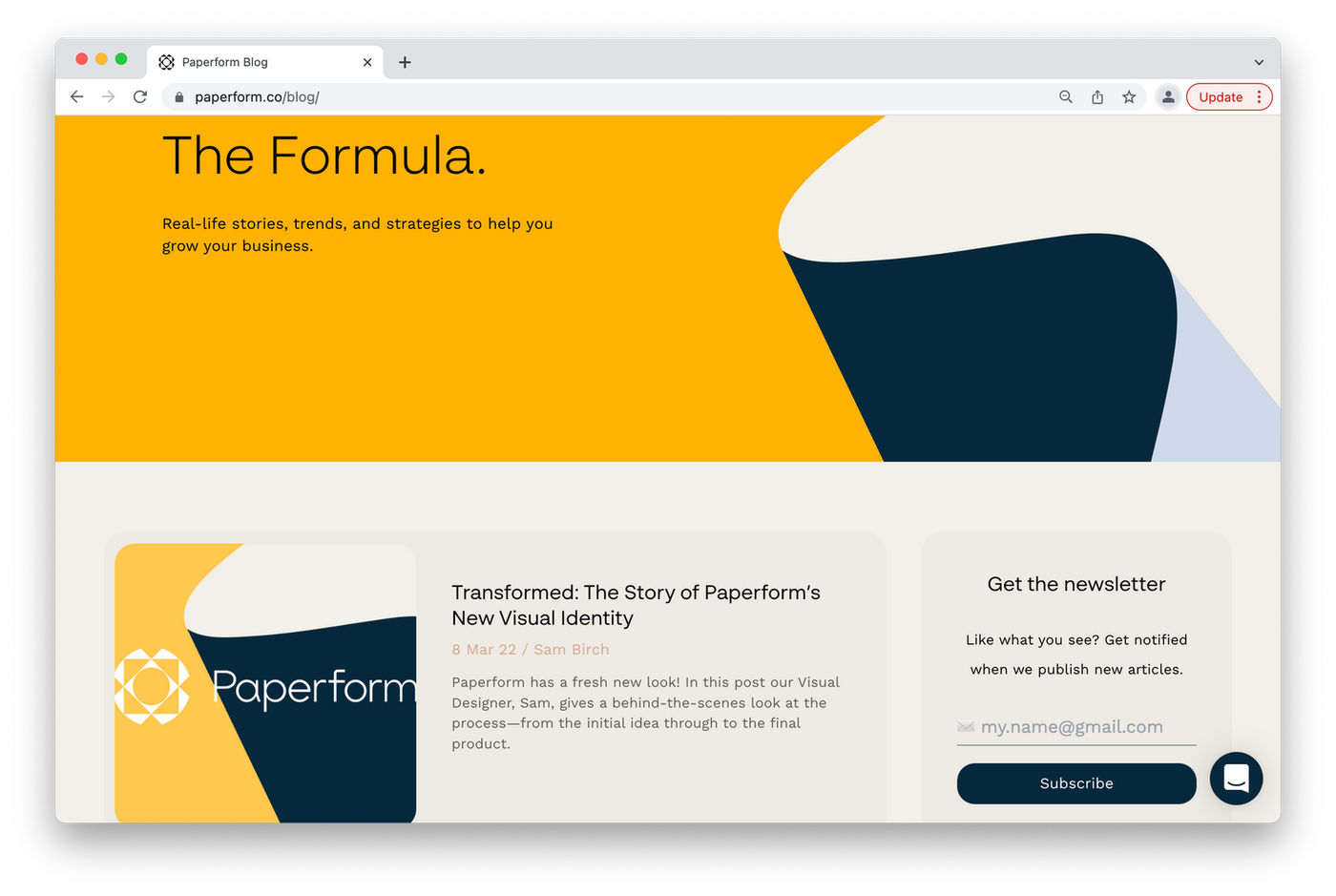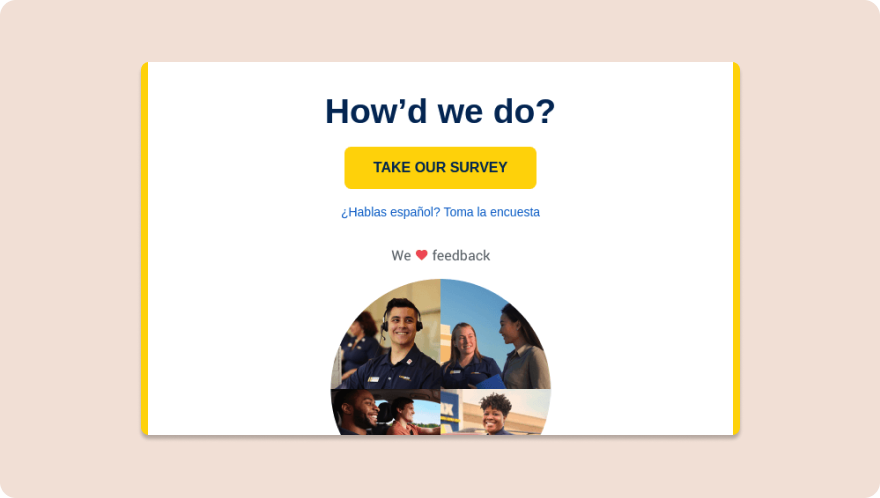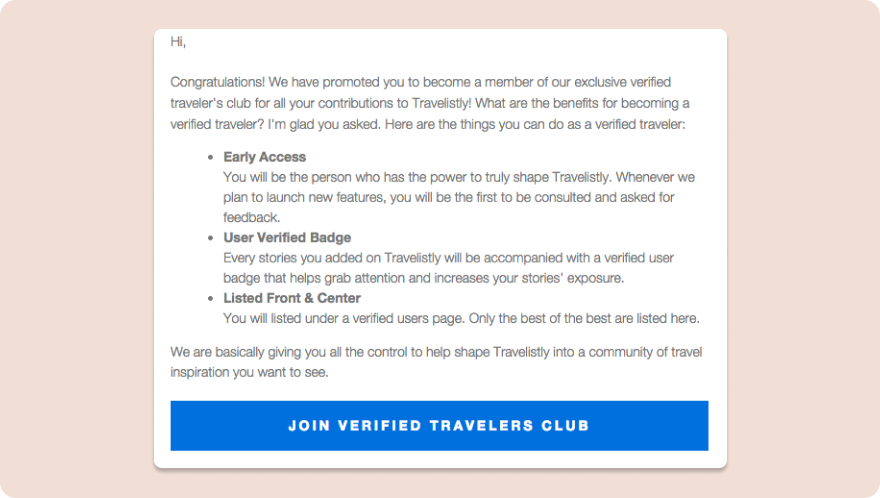
All Solutions

Explore all the solutions you can create with Paperform: surveys, quizzes, tests, payment forms, scheduling forms, and a whole lot more.
See all solutions











Connect with over 2,000 popular apps and software to improve productivity and automate workflows
See all integrationsSolutions
All Solutions

Explore all the solutions you can create with Paperform: surveys, quizzes, tests, payment forms, scheduling forms, and a whole lot more.
See all solutionsIntegrations

Connect with over 2,000 popular apps and software to improve productivity and automate workflows
See all integrationsResources
Using Targeted Email Marketing To Improve Your Small Business

For too long, email marketing has been seen as a tool reserved for big enterprises. In reality, small businesses benefit from it just as much. Whether you’re running a local business or an international eCommerce store, email marketing can bring in a tonne of new business.
Emails aren’t going anywhere. In fact, it’s predicted that email accounts will keep growing to over 4.5 billion by 2025, making its marketing potential even more appealing. To tap into this market, however, you’ll need to get creative and apply the right strategies.
In this article, you’ll learn what targeted email marketing is, how you can use it to keep your small business ahead of the competition.
What is targeted email marketing?
Email marketing is a way to improve business by keeping customers directly informed on what's going on with your company. Often, this is done by creating an email list of past customers or clients, which you can then use to advertise your products and services.
Targeted email marketing goes one step further by sending tailored emails to certain clients and customers, based on their past buying behavior or data they’ve shared with you.
Let’s say you have a client who consistently buys banana stickers from your online store. If you’re doing a sticker sale, sending a relevant email to that client and any other sticker fans is likely going to be more efficient than sending out an e-blast to your entire email list.
apparel order form
6 steps to start using targeted email marketing
A great email marketing strategy can improve conversion rates, customer retention rates and open rates. Plus, tailoring email marketing campaigns to particular demographics in the mailing list can improve digital marketing results, and keep you from sending irrelevant emails.
There are loads of reasons to use targeted email marketing in your business, and with the right know-how, getting started may be easier than you think. In the next section, we’ll break down the steps six steps you can take to let targeted email marketing improve your business.
1. Decide which tools you are going to use
The first step to setting up a targeted email marketing plan is figuring out which tools you’re going to use. You can rely on marketing automation and easy A/B testing to get the best results.
One solid option is Moosend, a great Mailchimp alternative, as it makes email management smoother with features specifically created for audience management.
In addition to an email management system, you may want some tools you can use to create unique designs. For example, an email signature generator can help you create professional emails that instill trust with users at first sight.
To get the best results, you may want to explore a few email marketing tools and see which ones will work for your business. When possible, it’s a good idea to opt for ones that integrate well with other solutions, like CRM tools.
2. Create a strategy to grow your list
Once you know what tools you need, it’s time to structure a strategy that gets results. It all starts by figuring out where to find new subscribers. You can find people interested in your email content in many places, but your business website, social media, or PPC ads are a good place to start.
Business website: Your website is the best place to begin growing contacts and use the traffic that’s coming to your page. You can start your list segmentation by creating different subscription forms on your website. We’ll chat more about user segmentation a little farther on.
Social media: Social media is a great place to find subscribers. You can use posts and stories to grow your list strategically, or incentivize followers to join your mailing list by offering special promotions. You can also share links to landing pages to drive more subscriptions to your list.
PPC ads: Another option is to run PPC (pay-per-click) campaigns that lead to specific landing pages that offer a free product like an ebook in exchange for an email address.
3. Decide what types of emails you'll send
In order to create an effective targeted email marketing strategy, you’ll need to have an understanding of the kinds of emails often sent to e-lists. Here are some of the usual suspects:
Welcome Email: This is an email sent to new subscribers that welcomes them to the community. You can use it to show your appreciation for them joining the list, or to direct them to links or products that might be relevant to them.
You can thank new subscribers by offering them a special gift. Using promo codes, free ebooks or another digital gift is a great way to say thank you.
Newsletter: The newsletter is the most common type of email sent out to e-lists. They are the perfect way to keep your followers up to date with your company news. Businesses send them out weekly, monthly or bi-monthly, depending on the type of business and the rate of change. The more news you have to share, the busier your newsletter schedule will be.
While newsletters are a powerful tool, they can also get caught up in a lot of inbox noise. When creating your newsletter strategy, be sure to align to company goals and find a unique perspective tailored to your target market.
Promotional Emails: Promotional emails deliver messages that emphasize special deals on your products and services. They should contain a clear call to action that engages the reader. Depending on your target audience, you can use them to:
- Share special promo codes for sales
- List currently discounted items
- Present a new product
It’s best to keep these emails short and to the point. That way your reader will see the sale or promo code right away, and avoid deleting it thinking it's just another spam email. You can make your promotional emails more effective by following metrics such as click-through rates, or using data to segment your audiences for the best results.
Customer Retention Emails: The purpose of a retention email is to build closer relationships with your clients. They’re the perfect opportunity to send personalized messages that show customers how much you care. To reward their loyalty, you can present limited promo codes with discounts.
You could invite loyal customers to special events such as webinars, or wish them a happy birthday, just to make their day. Taking the time to connect with and value your customers in this way is a great way to boost customer loyalty.
4. Use segmentation to create effective campaigns
Segmentation is perhaps the most important part of making an effective email marketing strategy. Different customer personas have various spending habits. here are many ways to segment your audience, but you can break it down into two main types: segmentation before joining, and segmentation after joining.
Segmentation before joining
Filtering users before joining is a great way to immediately sort them into different demographics. A great way to do this is by placing subscription forms on different pages. The people who sign up as blog visitors, for example, likely have different interests than those who sign up after buying a new product.
Paperform makes this process easy with our over 3,000 powerful, easy to use app integrations. You can make distinct email sign up forms for different parts of your website, and connect them with your preferred email marketing tool. That way, when someone clicks the CTA at your blog, they could be automatically added to a distinct contact list in Mailchimp or Mailshake.
Tailoring emails to people who will be most interested in them can help you send relevant messages to new customers. Sending relevant emails to returning customers is also a great way to keep them engaged.
And, you can have as many categories as you like, so there’s no need to worry about finding just one category for every customer.
Segmentation after joining
Segmenting your subscribers is an ongoing process. You can continue creating new categories even after people have subscribed to your e-list.
If you want to send a truly personalized email, you’ll need to track customer data. For ecommerce retail businesses, that means monitoring purchase history to see which items they are buying and when. This data will help you split your customers into even more specific subcategories based on their real-time spending habits.
Quizzes are another great way to segment your audience based on feedback. For example, if you’re an ecommerce store selling sports equipment, you could use quizzes to discover various sports team fans and advertise products with your audiences’ favorite brands on them. If you're looking for inspiration, Paperform has over 60 fully customizable quiz templates to choose from.
dog personality test
Whether you segment your customers by purchasing habits, sporting preferences, age, location, or any other metric, organizing your audience can help streamline your marketing efforts.
5. Prioritize the design
If you want to deliver relevant content to your audience, you need effective templates with eye-catching design for your emails, or else you can use an email template builder for guidance. Here are a few design elements to keep in mind:
- Colors: Staying consistent with your branding is important. Follow the same color pattern in your emails. That way, your customer will immediately recognize your brand when they see a new email in their inbox.
- Simplicity: There’s no need to clutter your email with unnecessary details that only serve to distract your readers. Instead, use a design that’ll keep the focus on the message.
- Clear call to action: Make your call to action visible. If it’s a promotional email, put the coupon code up front and centre. You can use a button that’s in contrast with the background to do this, or opt for a bigger font for the main message.
- Mobile-friendliness: More than half of your subscribers use smartphones for web browsing, so it’s important to use a design that is mobile optimized and fits on a small screen.
- Imagery: If you’re running an ecommerce business, try to add product images to your emails that are clickable. This can increase traffic to your online store.
You can experiment with these email elements to determine which combination works best for you. Luckily, the majority of email marketing software tools support A/B testing features, which allows you to test a couple different designs and see which is the most effective from a marketing standpoint. That way, you can be sure your design is working for you and your brand.
Form a better life now.
6. Track performance and adjust
One of the best parts of using email marketing software is tracking different email metrics. You can learn a lot about your target audience and adjust your marketing efforts accordingly. Some of the key metrics to follow are:
Deliverability rate: Also known as bounce rate, it represents the percentage of emails delivered to the email addresses. If they cannot be delivered to an email server, it’s considered a bounce. Keep this percentage low; otherwise email service providers might flag you as spam. You can avoid this by removing all the inactive emails from your email list.
Open rate: Open rate is the percentage of emails that get opened. Naturally, the more emails opened, the better. To increase your open rate, you can experiment with different subject lines and email types to find ones that perform best.
Click-through rate: Click-through rate is the percentage of clicks in your emails. Like open rate, more is definitely merrier here. You can use A/B testing again to see which templates give you the highest click-through rate.
Conversion rate: Conversion rate is a metric that shows you the percentage of people who opened your email and clicked on the call to action. It’s calculated by dividing the number of those who clicked on the CTA by the number of opened emails. Then, multiply that by 100, and you get the conversion rate.
List growth rate: Your list growth rate represents how much your email list grows. It will increase each time you get a new subscriber. You can use this metric to determine whether you are using the right marketing strategies to expand your e-list.
Like watering a flower, regularly monitoring these rates will help your targeted email marketing plan grow and thrive. You can use the data to find high effort processes and make adjustments that can lead to better open, click-through and conversion rates.
5 Targeted Email Marketing Examples
Now that you know how to build a targeted email marketing strategy, all you need is a bit of inspiration. These five different brands use email marketing services effectively to build relationships, drive more conversions and give rewards.
Paperform
 (Image Source: Paperform)
(Image Source: Paperform)When you land on Paperform’s blog page, you see two things: the latest post, and right next to it, in prime website real estate, a simple way to sign up for their newsletter. This is a perfect example of how easy it is to place a natural call to action in a highly visited part of your website.
Plus, because the call to action is unobtrusive and matches the design of the site overall (AKA, it isn’t an annoying pop-up), it’s less likely to distract readers, and more likely to draw in more email list subscribers.
Harvard Business Review
 (Image Source: Harvard Business Review)
(Image Source: Harvard Business Review)Harvard Business Review is a reputable resource that delivers outstanding content for the business world. Its subscribers are in for a treat when they subscribe. Harvard sends out different emails promoting its unique products, but part of what makes them special is their commitment to making subscribers feel like part of the community.
In this example, HBR subscribers receive an update about a new podcast they're promoting. Not only does this keep subscribers in the loop, but it's a great example of how to use segmentation effectively.
HBR sent this email to those who have subscribed to the "Management Tip of the Day" e-list, so they know that these subscribers might have a particular interest in the new workplace advice podcast they're advertising.
Carmax
 (Image Source: Carmax)
(Image Source: Carmax)If you’re thinking about how you could request feedback from your subscribers, here’s some insight on how Carmax did it. It cuts right to the chase— asking customers to review a recent customer service experience.
In order to ensure a great customer service experience and find areas for improvement, Carmax sends out short survey to recent customers. The email is short, clear, and the call to action is clearly visible.
While this is a good example of a survey request email, it's important not to send too many of these types of emails as they can get tedious and lead to survey fatigue.
Travelistly
 (Image Source: Travelistly)
(Image Source: Travelistly)The team from Travelistly sent a quick congratulatory email with a clear call to action: to join a club for certain active members of the site.
This is an example of a retention email that invites subscribers to dive deeper into the community and share their expertise with other members. This particular email is successful in that it makes the recipient feel special and recognized, which could help with customer retention.
Happy Human
 (Image Source: Happy Human)
(Image Source: Happy Human)This email from Happy Human is a great example of using design and seasonality to reflect your brand. This eco-conscious brand uses a sleek, minimalist design that underscores their low waste, no frills products.
The content marketing strategy behind the email is strong: it drives some traffic to their low-waste blog, and wishes subscribers happy holidays at the same time. Win-win.
Over to You
Targeted email marketing is one of the best ways to grow your small business. By gathering the right tools, making a plan, segmenting your audience, and following the data, you can create a strong email targeted email marketing campaign that can help boost your business and build community.
There are tonnes of ways to build an e-list, and while there are a handful of great examples and tips in this article, the best approach is to get creative and experiment with various strategies. Only you know what works best for your business. With a bit of patience and planning, your conversion rates will be soaring in no time.
This guest post was written by Helga Zabalkanska, CMO at Newoldstamp, and MySignature. She has over 10 years of experience in digital marketing with a data-driven approach, and is a startup enthusiast and SaaS lover.
Deepak (Dee) Shukla, the dynamic founder of Pearl Lemon, built the leading SEO agency in London by l...
Here is the ultimate list of online form builders, what they do best, their pricing, and examples to...
When Luiz Sifuentes lost the platform powering his entire web design business, he rebuilt smarter—wi...
All of our product updates and big company news for Paperform and Papersign from Oct 24 - May 25 to ...